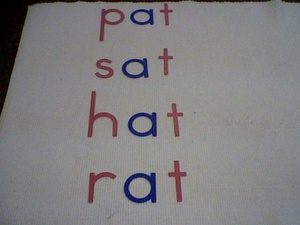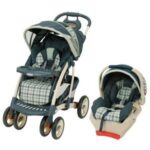Maria Montessori developed new ideas and methods for teaching children as a result of her scientific training as an engineer and doctor. She realized that children have an absorbent mind that learns within sensitive periods. The role of the educator is to harness the power of this absorbent mind during each of these sensitive periods, and to guide the child along the curriculum accordingly.
Montessori also realized that children learn physically. They crave movement and learn best through manipulating materials with their hands and using multiple senses. For example, in the language area, children learn their phonic sounds through seeing the shapes of the letters, feeling the shapes of the letters as they trace the sandpaper letters, and by hearing the sounds as they repeat them while tracing them.
In Montessori education, all of the different areas can overlap. Skills learned in the Practical Life area prepare the child for reading skills, by providing coordination, concentration, control, independence, and order. Language skills are applied when learning science, social studies, and even in the math area. How language is used in each area requires a little creativity on the part of the teacher and the child.
The Montessori language curriculum especially requires creativity. Upon first glance, the language curriculum seems to be lacking, as it only consists of three materials: sandpaper letters, moveable alphabet, and metal insets.
However, the creative teacher can be overjoyed at this opportunity to stretch her imagination, and engage the help of the children in developing new activities.
The pre-reading area allows for the most creativity. Children who are working in this stage are generally three to four years old. Activities mainly consist of matching and sorting work, with some rhyming and naming work. The creative teacher will go to any store and be able to find useful manipulatives. She may also be adept at using the computer and basic craft materials.
The sandpaper letters and metal insets are used sometimes by three year-olds, but mainly four and five year-olds. The sandpaper letters are used to learn the sounds. Metal insets help develop fine motor control, which is used in writing.
The moveable alphabet is used by children mainly aged four and older. They can spell three-letter words to emphasize the beginning, middle, and ending sounds. Or they can write out sentences. Montessori said that children learn how to write and spell words before they can necessarily read them from print.
From this point on, the teacher can devise multiple activities. Some children continue working with three-letter words. Others will then work on larger words and consonant blends and digraphs. At the same time, many of them begin reading.
Language lessons need to go beyond just reading, though. Children practice fine-motor control by using the metal insets. The sandpaper letters are traced in the same manner in which they are written. Other activities can be done to practice “writing” the letters. Eventually, the child will practice handwriting. They can even write and illustrate stories that they have created. Teachers often take dictation. This is just as important, because the child is learning expressive language.
A language curriculum at this age must also include vocabulary-building exercises. These can be accomplished by creating nomenclature or other labeling activities, and through reading books.
Language is in the world all around us. Teachers just need to make the most out of it.




